 W
WThe Anomaluridae are a family of rodents found in central Africa. They are known as anomalures or scaly-tailed squirrels. The seven extant species are classified into three genera. Most are brightly coloured.
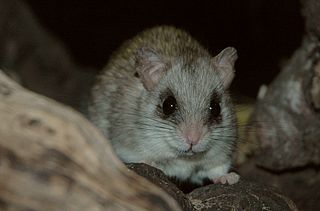 W
WThe acacia rat is a species of rodent in the family Muridae. It is found in Botswana, Democratic Republic of the Congo, Ethiopia, Kenya, Malawi, Mozambique, Namibia, Somalia, South Africa, Eswatini, Tanzania, Zambia, and Zimbabwe. Its natural habitat is subtropical or tropical dry shrubland.
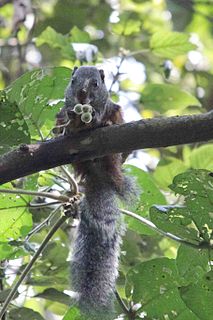 W
WAfrican giant squirrels form a taxon of squirrels under the subfamily Xerinae. They are only found in Africa.
 W
WThe African grass rat is a species of rodent in the family Murinae.
 W
WAfrican ground squirrels form a taxon of squirrels under the subfamily Xerinae. They are only found in Africa. There is another African ground squirrel of the genus Atlantoxerus, the Atlantoxerus getulus present in southwestern Morocco and northern Western Sahara. It is invasive in the Canary Islands since an introduction in 1971.
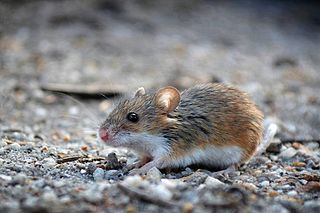 W
WThe African pygmy mouse is one of the smallest rodents. It is widespread within sub-Saharan Africa, and is kept as a pet in other parts of the world. Like the common house mouse, it is a member of the enormous superfamily Muroidea, which includes about 1000 different species.
 W
WThe African pygmy squirrel is a species of rodent in the family Sciuridae. It is monotypic within the genus Myosciurus. It is found in tropical rainforests in Cameroon, the Republic of the Congo, Equatorial Guinea, and Gabon. It is not considered threatened, but likely declines locally due to habitat loss. Together with the least pygmy squirrel of Asia, the African pygmy squirrel is the world's smallest squirrel measuring about 12–14 cm (4.7–5.5 in) in total length and just 15–18 g (0.53–0.63 oz) in weight, which is less than a typical house mouse.
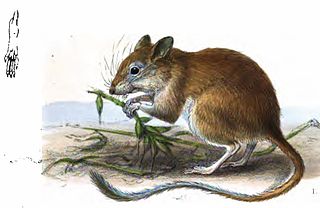 W
WThe Balochistan gerbil or dwarf gerbil, is distributed mainly from Morocco across north Africa, the Arabian Peninsula, the Middle East and western Asia. This is a common species with a wide distribution which faces no obvious threats, so the International Union for Conservation of Nature has rated its conservation status as being of "least concern".
 W
WBrants's whistling rat or Brants' whistling rat is one of two species of murid rodent in the genus Parotomys. It is found in Botswana, Namibia, and South Africa where its natural habitats are subtropical or tropical dry shrubland and pastureland. It was first described in 1834 by the Scottish zoologist Andrew Smith who named it in honour of the Dutch zoologist and author Anton Brants.
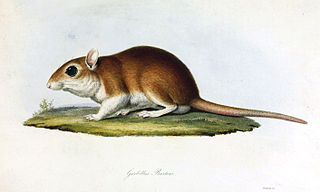 W
WBurton's gerbil is distributed mainly in Darfur, Sudan. Less than 250 individuals of this species of gerbil are thought to persist in the wild. It may have been named after Edward Burton, who had the gerbil in his menagerie, obtained from Darfur and described by Frédéric Cuvier.
 W
WThe Cape short-eared gerbil is a species of rodent in the family Muridae. It is the only species in the genus Desmodillus. It is found in Angola, Botswana, Namibia, and South Africa. Its natural habitats are hot deserts and temperate desert.
 W
WThe chestnut climbing mouse is a species of rodent in the family Nesomyidae. It is found in Angola, Democratic Republic of the Congo, Ethiopia, Kenya, Lesotho, Malawi, Mozambique, Rwanda, South Africa, Eswatini, Tanzania, Uganda, Zambia, and Zimbabwe. Its natural habitats are dry savanna and moist savanna.
 W
WThe Congo rope squirrel is a species of rodent in the family Sciuridae. It is found in Angola, Democratic Republic of the Congo, and Namibia. Its natural habitats are moist savanna, subtropical or tropical dry shrubland, and rocky areas.
 W
WThe dassie rat is an African rodent found among rocky outcroppings. It is the only living member of its genus, Petromus, and family, Petromuridae. The name "dassie" means "hyrax" in Afrikaans, and the two animals are found in similar habitats. Petromus means "rock mouse" and dassie rats are one of many rodents sometimes called rock rats. The family and genus names are sometimes misspelled as Petromyidae and Petromys.
 W
WDelany's mouse or Delany's swamp mouse is a species of rodent in the family Nesomyidae. It is the only species in the genus Delanymys and the only extant member of subfamily Delanymyinae, which also contains the fossil genus Stenodontomys. It was previously placed in subfamily Petromyscinae, but it is apparently not closely related to Petromyscus. It is found in Democratic Republic of the Congo, Rwanda, and Uganda. Its natural habitats are subtropical or tropical high-altitude shrubland and swamps. It is threatened by habitat loss.
 W
WEmin's pouched rat (Cricetomys emini), also known as the African pouched rat, is a large rat of the muroid superfamily. It is related to Cricetomys gambianus, the Gambian pouched rat. Both species belong to Cricetomys, the genus of the giant pouched rats.
 W
WThe fire-footed rope squirrel is a species of rodent in the family Sciuridae. It is found in Angola, Burundi, Cameroon, Republic of the Congo, Democratic Republic of the Congo, Ivory Coast, Equatorial Guinea, Gabon, Gambia, Ghana, Guinea, Guinea-Bissau, Liberia, Nigeria, Senegal, Sierra Leone, and Uganda. Its natural habitats are subtropical or tropical moist lowland forests, moist savanna, and plantations.
 W
WFukomys is a genus described in 2006 of common mole-rats, containing several species that were formerly placed in the genus Cryptomys; its species are endemic to Africa.
 W
WThe Gambian pouched rat, also known commonly as the African giant pouched rat, is a species of nocturnal pouched rat of the giant pouched rat genus Cricetomys, in the family Nesomyidae. The species is among the largest muroids in the world, growing up to about 0.9 metres (3 ft) long including the tail which makes up half of its total length. It is widespread in Sub-Saharan Africa, ranging geographically from Senegal to Kenya and from Angola to Mozambique and in altitude from sea level to 2,000 metres (6,600 ft).
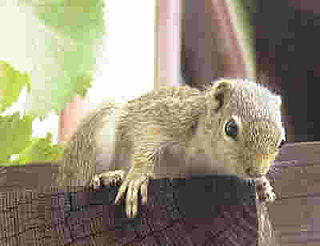 W
WThe Gambian sun squirrel is a species of rodent in the family Sciuridae. It is found in Angola, Benin, Burkina Faso, Central African Republic, Chad, Democratic Republic of the Congo, Ivory Coast, Eritrea, Ethiopia, Gambia, Ghana, Guinea, Guinea-Bissau, Kenya, Liberia, Nigeria, Senegal, Sierra Leone, Sudan, Tanzania, Togo, Uganda, and Zambia. Its natural habitat is wooded savanna.
 W
WThe giant pouched rats of sub-Saharan Africa are large muroid rodents. Their head and body lengths range from 25–45 cm (10–17.5 in) with scaly tails ranging from 36–46 cm (14–18 in). They weigh between 1.0 and 1.5 kg.
 W
WThe gray spiny mouse is a species of rodent in the family Muridae found in Ethiopia, Kenya, Sudan, and Uganda. Its natural habitats are dry savanna, moist savanna, rocky areas, arable land, and rural gardens.
 W
WThe greater cane rat is one of two species of cane rats, a small family of African hystricognath rodents. The cane rat lives by reed-beds and riverbanks in Sub-Saharan Africa. Cane rats can grow to nearly 60 cm (2.0 ft) in length and weigh a little less than 8.5 kg (19 lb). It has rounded ears, a short nose, and coarse bristly hair. Its forefeet are smaller than its hind feet, each with three toes.
 W
WThe hairy-footed gerbil is a species of gerbil found in Angola, Botswana, Mozambique, Namibia, South Africa, and Zimbabwe. Its natural habitats are dry savanna, temperate shrubland, hot deserts, sandy shores, and urban areas.
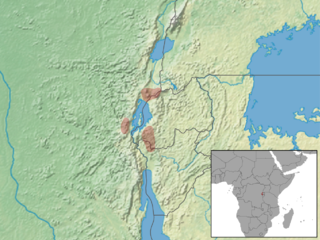 W
WKemp's thicket rat is a species of rodent in the family Muridae. It is found in Burundi, Democratic Republic of the Congo, and Rwanda. Its natural habitat is subtropical or tropical moist montane forests. It is threatened by habitat loss.
 W
WThe Lady Burton's rope squirrel is a species of rodent in the family Sciuridae. It is found in Cameroon, Central African Republic, Republic of the Congo, Equatorial Guinea, and Gabon. Its natural habitats are tropical and subtropical moist broadleaf forests and subtropical or tropical moist montane forest. It is a common species with a wide range, and the International Union for Conservation of Nature has rated it as being of "least concern".
 W
WThe lesser Egyptian gerbil is a small species of rodent in the family Muridae. It is native to North Africa and the Sinai Peninsula, where it lives in sandy habitats. It is a common species, and the International Union for Conservation of Nature has rated its conservation status as being of "least concern".
 W
WThe maned rat or crested rat is a nocturnal, long-haired and bushy-tailed East African rodent that superficially resembles a porcupine. The world's only poisonous rodent, the maned rat borrows toxins from plants to fend off predators.
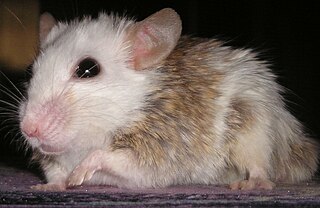 W
WMastomys is a genus of rodent in the family Muridae endemic to Africa. It contains these species:Awash multimammate mouse or Awash mastomys Southern multimammate mouse Guinea multimammate mouse Hubert's multimammate mouse Verheyen's multimammate mouse Natal multimammate mouse Dwarf multimammate mouse Shortridge's multimammate mouse
 W
WHildegarde's broad-headed mouse or Hildegarde's zelotomys, is a species of rodent in the family Muridae. It is found in Central Africa.
 W
WMatthey's mouse is a species of rodent in the family Muridae.
 W
WThe Togo mouse, also known as Büttner's African forest mouse or the groove-toothed forest mouse, is a unique muroid rodent known from only two specimens taken from near the type locality of Bismarckburg, near Yege, Togo, in 1890. Its genus is monotypic.
 W
WThe mutable sun squirrel is a species of rodent in the family Sciuridae. It is found in Malawi, Mozambique, Tanzania, Zambia, and Zimbabwe. Its natural habitats are subtropical or tropical moist lowland forest, subtropical or tropical moist montane forest, moist savanna, and subtropical or tropical high-altitude grassland.
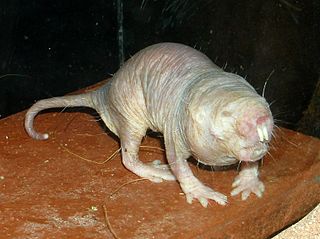 W
WThe naked mole-rat, also known as the sand puppy, is a burrowing rodent native to parts of East Africa. It is closely related to the blesmols and is the only species in the genus Heterocephalus of the family Heterocephalidae. The naked mole-rat and the Damaraland mole-rat are the only known eusocial mammals, the highest classification of sociality. It has a highly unusual set of physical traits that allow it to thrive in a harsh underground environment and is the only mammalian thermoconformer, almost entirely ectothermic (cold-blooded) in how it regulates body temperature.
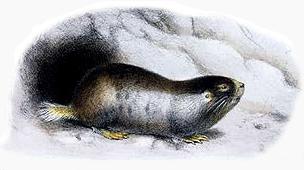 W
WThe Namaqua dune mole-rat is a species of rodent in the family Bathyergidae.
 W
WThe Namaqua rock rat is a species of rodent in the family Muridae. It is sometimes included in the genus Micaelamys. It is found in Angola, Botswana, Lesotho, Malawi, Mozambique, Namibia, South Africa, Eswatini, Zambia, and Zimbabwe. Its natural habitats are temperate forest, dry savanna, temperate shrubland, subtropical or tropical dry shrubland, temperate grassland, rocky areas, hot desert, temperate desert, rocky shores, arable land, rural gardens, and urban areas.
 W
WThe Natal multimammate mouse is a species of rodent in the family Muridae. It is also known as the Natal multimammate rat, the common African rat, or the African soft-furred mouse.
 W
WPercival's spiny mouse is a species of rodent in the family Muridae. It is found in Kenya, Somalia, South Sudan, and Uganda. Its natural habitats are dry savanna, subtropical or tropical dry shrubland, and rocky areas. It is one of two known species of mammals, the other being Acomys kempi, capable of completely regenerating damaged tissue, including hair follicles, skin, sweat glands, fur and cartilage.
 W
WThe African brush-tailed porcupine is a species of rat-like Old World porcupine, indigenous to a broad belt of Africa ranging from Guinea on the west coast to Kenya on the east. This is a common species with a very wide range, and despite being used extensively for bushmeat, the International Union for Conservation of Nature has rated its conservation status as being of "least concern".
 W
WThe red rock rat, or red veld rat, is a species of rodent in the family Muridae native to southern Africa.
 W
WThe red-legged sun squirrel is a species of rodent in the family Sciuridae, also commonly known as the crab-eating mongoose and the isabelline red-legged sun squirrel. It is native to tropical western and central Africa where its range extends from Senegal in the west, through Nigeria and the Republic of Congo to Uganda and Tanzania in the east. Its natural habitats are subtropical or tropical moist lowland forests and moist savanna. This species is thought to be common and has a very wide distribution, so the International Union for Conservation of Nature has rated its conservation status as being of "least concern".
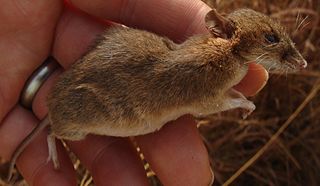 W
WRudd's mouse or the white-bellied brush-furred rat is the only member of the genus Uranomys. This animal is closely related to the spiny mice, brush-furred mice, and the link rat.
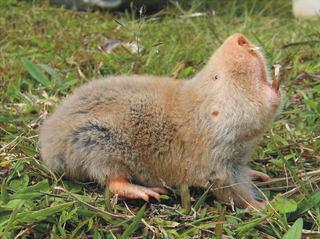 W
WThe silvery mole-rat, silvery blesmol, or silky mole-rat is a species of mole-rat of East Africa which occurs in southern Kenya, Tanzania, southeastern Democratic Republic of Congo, Mozambique and Malawi. Solitary and aggressive, little is known about its ecology or behavior. It is monotypic in the genus Heliophobius. A common species, the International Union for Conservation of Nature has rated it as being of "least concern".
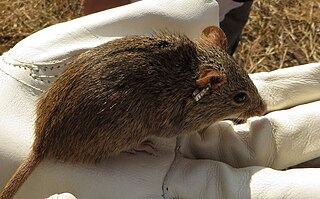 W
WThe single-striped grass mouse or single-striped lemniscomys is a species of rodent in the family Muridae.
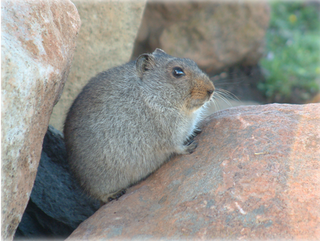 W
WSloggett's vlei rat or ice rat is a species of rodent in the family Muridae. It is found in southern Lesotho and South Africa where its natural habitats are subtropical or tropical high-altitude grassland, swamps, and rocky areas. Its name commemorates Col. Arthur Sloggett who served in South Africa and collected at Deelfontein in 1902. This is a common species and the International Union for Conservation of Nature has rated it as being of "least concern".
 W
WThe southern giant pouched rat is a species of rodent in the family Nesomyidae. It is distributed in the savannah of East and Southern Africa.
 W
WThe southern multimammate mouse or southern African mastomys is a species of rodent in the family Muridae which is endemic to southern Africa. It is called a multimammate mouse because it can have 8 to 12 pairs of mammae, in comparison other mouse species only have 5 pairs.
 W
WThe term spiny mouse refers to any species of rodent within the genus Acomys. Similar in appearance to mice of the genus Mus, spiny mice are small mammals with bare, scaled tails. However, their coats are endowed with unusually stiff guard hairs similar to the spines of a hedgehog; this trait is the source of the common name, spiny mouse.
 W
WThe Cape ground squirrel or South African ground squirrel is found in most of the drier parts of southern Africa from South Africa, through to Botswana, and into Namibia, including Etosha National Park.
 W
WThe typical striped grass mouse is a small rodent of the suborder Myomorpha in the family Muridae.
 W
WWaters's gerbil is distributed mainly in Sudan, Somalia, and Djibouti.
 W
WThe woodland thicket rat is a species of rodent in the family Muridae. It is found in Angola, Burundi, Democratic Republic of the Congo, Kenya, Malawi, Mozambique, Rwanda, South Africa, South Sudan, Eswatini, Tanzania, Zambia, and Zimbabwe. Its natural habitats are subtropical or tropical dry forest, subtropical or tropical moist lowland forest, subtropical or tropical dry shrubland, subtropical or tropical moist shrubland, subtropical or tropical high-altitude shrubland, subtropical or tropical dry lowland grassland, arable land, pastureland, and urban areas.
 W
WZenkerellinae is a subfamily of "pygmy scaly-tailed flying squirrels" which was classified in 1898 by Paul Matschie. Zenkerellinae gives rise to two genera of african rodents: Idiurus and Zenkerella.